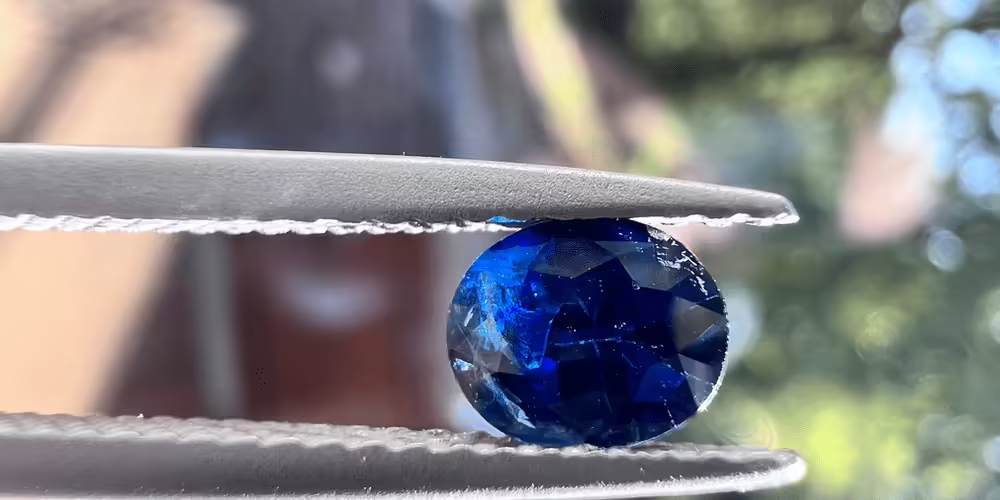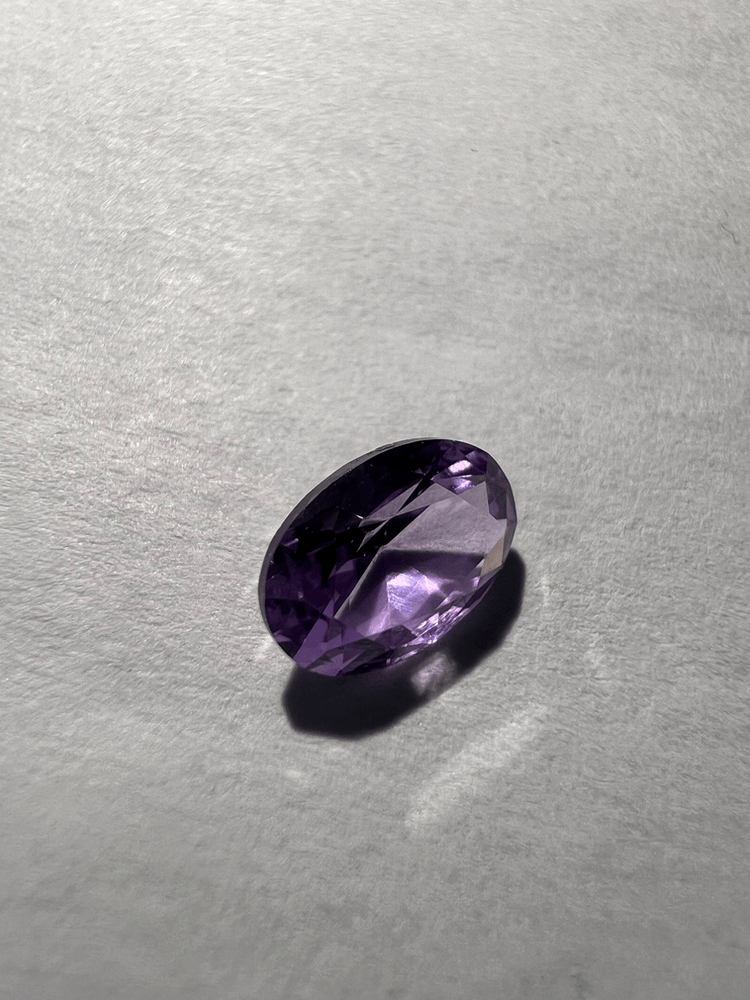Sapphire: Properties, Uses and Virtues
Sapphire, the Jewel of the Earth: sparkling brilliance!
Sapphires, gems renowned for their captivating colors and enduring beauty, have fascinated human hearts for centuries. Celebrated for their brilliance and symbolic significance, sapphires shine like one of nature’s most exquisite creations. Join us on an adventure to delve into the geological origins, historical fabric and metaphysical appeal of sapphires, gems that occupy a place of honor in the world of beauty and meaning.

Saphir: Table of contents
- Sapphire Geological Formation
- Rough Sapphire – Natural Beauty
- Sources – Exploring the global origins of Sapphire
- Historical Significance of the Sapphire – A Tapestry of Nobility, Romance and Symbolism
- Metaphysical Properties of Sapphire – A journey into the spiritual realm
- Sapphire Varieties: Beyond the blue
- Optical Effects of Sapphire
- Colors of Sapphire – An unsuspected diversity
- Sapphire’s Durability and Wearability
- Sapphire Ameliorations and Treatments – Beware!
- Synthetic Sapphire – Nature in the Laboratory
- Imitation Sapphire – Ensuring authenticity
- Sapphire Care – Preserving natural beauty
Sapphire Geological Formation
Sapphires, a variety of corundum composed mainly of aluminum oxide, emerge under the pressures of metamorphic rocks and igneous processes. They form as a result of complex interactions between minerals within the earth’s crust, crystallizing into the radiant gems that captivate us. The geological formation of sapphires reveals a remarkable journey of transformation and creation. They are often found in alluvial deposits.
Rough Sapphire – Natural Beauty
Frequently found in different forms, crystals of this mineral generally have a common barrel shape or a prismatic structure with flat terminations. Sometimes, they can have a bipyramidal configuration. Moreover, this mineral can also be found in massive and granular formations, as well as in the form of rolled pebbles.
The pristine beauty of raw corundum crystals sets the stage for the exceptional brilliance and clarity for which sapphires and rubies are renowned.
Sources – Exploring the global origins of Sapphire
Sapphires emerge from diverse corners of the world, with notable deposits in regions such as Kashmir in India, Sri Lanka, Australia, Thailand, Montana in the USA and Madagascar. Each location brings its own distinct hues and qualities to the sapphire spectrum, creating a web of color that testifies to the gem’s global presence and universal appeal.
Historical Significance of the Sapphire – A Tapestry of Nobility, Romance and Symbolism
Throughout history, sapphire has woven a complex tapestry of meaning, embodying nobility, truth and profound symbolism. Its unrivalled beauty and rich hues adorned the robes of royalty and clergy, creating an aura of prestige and mystery.
A Symbol of Nobility and Virtue:
Sapphire, with its extraordinary color and appeal, has long been a symbol of nobility, truth, sincerity and fidelity. Across cultures and civilizations, this gem has been revered for its regal appeal, evoking the essence of kings and queens. In ancient times, sapphires were believed to protect their wearers from envy and damage, a precious talisman for those who ruled. The gem’s deep blue hue set the standard by which other blue gems were measured, a yardstick of beauty and distinction.
Protection and Heavenly Blessings :
In ancient Greece and Rome, the belief that blue sapphires offered protection against envy and harm imbued these gems with a sense of mystical power. The Middle Ages saw the clergy wearing blue sapphires as symbols of Heaven, while the common people believed that wearing these gems attracted heavenly blessings. Over time and across cultures, sapphires have been endowed with a variety of mystical characteristics, including the ability to protect chastity, promote peace between adversaries, communicate with spirits and reveal the enigmatic secrets of oracles.
A Blue Legacy:
Sapphire’s historic connection to the color blue is deep and profound. The very name of the gem, derived from the Greek word “sappheiros”, is linked to the bewitching blue hues it embodies. Through folk tales, history, art and the collective consciousness of consumers, sapphire has become engraved as the blue gemstone par excellence. For many, the term “sapphire” immediately conjures up visions of resplendent blue gems, becoming synonymous with a range of captivating shades of blue.
Intertwined Romance and Royalty :
Sapphire’s intertwining with romance and royalty reached its zenith in 1981, when Britain’s Prince Charles presented Lady Diana Spencer with a blue sapphire engagement ring. Their love story, intimately linked to the allure of sapphire, captured the world’s imagination. Princess Diana’s charm and elegance, combined with her sapphire-embellished finger, linked modern events to the great tales of history and fairy tales, reinforcing the gem’s enduring link with nobility and romance.
Today, many Sapphires have become historically famous, such as the Stuart Sapphire that once adorned England’s Imperial Crown of State, Queen Mary’s Sapphire Brooch, or King George III’s Sapphire Coronation Set.
Sapphire is also celebrated as the birthstone of September!
Metaphysical Properties of Sapphire – A journey into the spiritual realm
Sapphires have long been believed to possess metaphysical properties that transcend the physical realm. Associated with calm, wisdom and clairvoyance, sapphires have been used in spiritual practices to enhance meditation and promote inner tranquility. These gems are believed to connect wearers to higher planes of understanding and enlightenment.
Sapphire Varieties: Beyond the blue
Often perceived through the prism of blue, sapphire actually reveals a vast range of dazzling hues, leaving red in the hands of ruby. There are 2 distinct varieties of sapphire:
- Blue Sapphire :
Blue sapphire, with its rich history and timeless beauty, remains a classic gemstone in the world of gemology. Its hues range from soothing azure to deep royal blue, each shade evoking a unique meaning. Light blue recalls purity, royal blue evokes nobility, and deep blue is often associated with loyalty. Blue sapphire is the guardian of wisdom and protection, a favorite choice for jewelry that transcends generations.
- Fancy Sapphire :
The fancy sapphire category is a veritable treasure trove of colors, with the exception of red, which is left to ruby. From soft pink to brilliant yellow, these gems embody nature’s diversity. Each hue has its own symbolism and unique charm, allowing jewelry enthusiasts to choose sapphires that reflect their personality. Fancy sapphires open up a world of unique expression and creativity, offering a variety of hues that evoke a panoply of emotions.
Optical Effects of Sapphire


Saphir synthétique à changement de couleur en lumière naturelle et artificielle – Photos par Lauréline Colliard FGA
Synthetic sapphire with color change in natural and artificial light – Photos by Lauréline Colliard FGA
Star sapphire shows a strong asterism effect, while color-change sapphire exhibits a variation in hue depending on the light present.
Colors of Sapphire – An unsuspected diversity
Sapphires paint nature’s palette with a kaleidoscope of colors, reflecting the gem’s versatility and charm. From classic blues to exquisite pinks, sapphires present a range of hues that capture the essence of beauty in all its forms.
The only color not accepted for a sapphire is red, because a red sapphire would by definition be…a ruby!
Sapphire’s Durability and Wearability
Sapphires, with their exceptional hardness, ranking 9 on the Mohs scale, endure as durable gems that stand the test of time. Their long-lasting brilliance and resistance to wear make them an ideal choice for a lifetime of adornment.
Sapphire Ameliorations and Treatments – Beware!
As a precious and rare gem, corundum, like rubies and sapphires, undergoes numerous treatments designed to improve the stone’s appearance and thus its value.
- Heat treatment: Corundum is commonly heat treated to improve its clarity and colour. Although this enhancement is widely accepted and does not alter the value of the gemstone, it is essential to disclose any treatment when describing a gem or piece of jewelry.
- Diffusion: This treatment involves adding chemical elements to the gem’s surface, then heating it. It creates a colored layer on the outer surface, giving the appearance of a more precious, intensely colored gemstone. This treatment is stable, but only treats a very thin part of the stone’s surface. Repolishing a diffused stone may result in staining or loss of color, as the colored surface is removed.
- Fracture filling: Corundum with visible fractures or cavities can be filled with a substance, such as glass or resin, to improve clarity and durability. This treatment can make the gemstone more visually appealing, but can affect its overall value.
- Beryllium treatment: A process that introduces beryllium into corundum to improve or modify its color. It can create intense, vivid colors, but transparency and disclosure are essential as they can significantly affect the gem’s value. This treatment is stable.
- Irradiation: This involves exposing the gem to radiation to alter its color. Irradiation can create attractive hues, but it must be disclosed as it can affect the gem’s stability and long-term appearance.
- Surface Coating: A thin layer of color or gloss-enhancing substance is applied to the gem’s surface to temporarily improve its appearance. This treatment is generally not permanent and may wear over time.
- Laser drilling: Used to improve the clarity of corundum by creating tiny channels to remove inclusions. Laser drilling is often followed by fracture filling to make the inclusions less visible.
Gemstone sellers must disclose any treatment carried out on corundum to ensure transparency and help buyers make informed decisions.
Synthetic Sapphire – Nature in the Laboratory
Synthetic sapphires are common on the market. Cultivated in the laboratory, they have the same physical and optical properties as their natural counterparts. It is essential and mandatory to maintain ethical practices in the gemstone trade to disclose its synthetic nature.
Be careful, though, as many unscrupulous sellers won’t do this.
Imitation Sapphire – Ensuring authenticity
As a revered member of the four “Precious Stones”, sapphire imitations abound on the market, ranging from colored glass to almost every other colored gemstone. Preserving authenticity is crucial when acquiring sapphires to ensure that your investment is genuine.
Sapphire Care – Preserving natural beauty
To preserve the elegance of sapphire jewelry, avoid exposure to aggressive chemicals and rapid temperature changes.
Gently clean sapphires with mild soapy water and a soft brush, ensuring that their brilliance remains intact.
It is generally safe to use mechanical tools to clean sapphires.
However, in the presence of fractures, inclusions or doubts, it’s best to avoid them.
Proper care ensures that sapphires retain their enduring appeal for generations.







Leave a Reply
Want to join the discussion?Feel free to contribute!